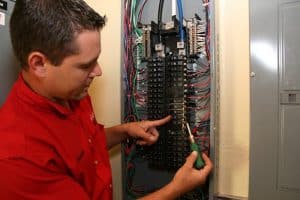
Knowing what an electrical panel is, is quite different from knowing how to select one. The right panel or breaker panel for your home is the one that serves your electrical needs while ensuring electrical safety. Factors that are considered to determine the right breaker panel include amperage, number of circuit breakers, type of appliances you use, and brand. Naturally, if your home operates on great electrical demand, you will need a large electric breaker.
Keep reading these lines for a step-by-step guide.
- Know the components of your breaker panel
As we have explained, an electric panel is a big switch with smaller switches that control power to various parts of your home. There is a main breaker within the panel that identifies the total amperage capacity of the breaker and limits the electricity supplied through it. The bus bars in the panel, then transmit this power flowing through the main breaker to two thick black wires. From this point, the power is carried to the circuits through the circuit breaker.
- Determine your home’s amperage capacity.
This is perhaps the most important part of finding the right electrical panel for your home. For example, if you determine that your home’s amperage capacity is 150 amps, you are looking for a panel that can handle this or more. Your choices mostly lie between 150 amps to 200 amps electrical panels. Here’s how to calculate your home’s amperage capacity;
- Multiply the square footage of your home by 3. Set the resulting number aside.
- Add the kitchen wattage needs by multiplying 20 amps by 120 volts. If you also have any dedicated kitchen circuits, multiply the amperage by 220 volts. So you can have a regular kitchen wattage of 20 amps (dishwasher) by 120 volts in addition to 50 amps (electric range) by 220 volts.
- If there’s a dedicated laundry room, perform the same calculation as the kitchen. A dryer often uses 30-amp double-pole dedicated breaker. Multiply this by 220 volts. The washer uses a 20-amp single-pole dedicated breaker. Multiply that by 120 volts. Add up all the resulting numbers so far.
- Now, add the wattage of the air conditioner and heating unit. Both run on a 60-amp double-pole dedicated breaker. Multiply this by 220 volts each.
- Add all the total watts together now and divide the result by 230, which is with regards to the NEC.
- Round up the total amperage you get to the nearest panel size.
- Consider the total load
With these calculations, you have a great direction of the electrical panel’s capacity. Remember to consider that circuit breakers operate at 80% of their capacity. This means that if a circuit breaker is rated for 20 amps, it should use no more than 16 amps. Room with capacity is important for electrical panels.

